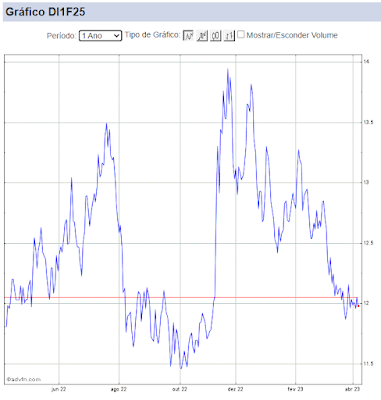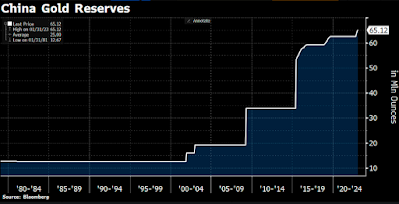Choques de VaR, Valuation e Portfolio Allocation.
Complementando a análise em torno de valuation e position do post da tarde de sexta-feira, acho válido analisarmos alguns pontos colocados por alguns analistas desde então.
Já concluindo antes de apresentar algumas passagens desses relatórios abaixo, acredito que, ao que tudo indica, o período de volatilidade baixa, ou inexistente, ficou para trás. Teremos pela frente um ambiente de maior incerteza e volatilidade. Não podemos descartar novas rodadas de pressão nos ativos de risco, muito em função de posição técnica, valuation e modelos de gestão (VaR, Risk Parity e etc). Contudo, não vejo, pelo menos ainda, indícios de que o cenário de médio-prazo tenha que ser alterado.
Assim, os próximos dias, ou talvez semanas, requerem um postura mais tática e dinâmica na alocação/busca de hedges (tamanhos e instrumentos) para um portfólio que, na minha visão, ainda precisa estar alocado em ativos do Brasil. Pioras mais acentuada devem ser vistas como oportunidade de elevar a alocação nessas classes de ativos locais, mesmo sabendo que teremos dias, talvez semanas, de volatilidade mais elevada e maior incerteza.
Segundo o JP Morgan:
Markets were quite stable this week, until today’s rapid sell off in everything, seemingly on bearish comments from ECB and Fed officials that have put markets into tamper-tantrum mode. The extreme low volatility of the past two months had likely increased leverage among the increasing number of managers who manage their positions on a value-at-risk basis. The lower delivered volatility, the higher their exposure in order to retain the same VaR.
This kind of leverage essentially amplifies the impact of any shock and typically only shows up on the downside. Its impact is a function of how important the new news and how low volatility was before and for how long. The extremely tight range of stock and bond markets has prevailed for two months now, so the impact of a sudden breakout may not be over in a day.
But the size of the original shock is equally important and should determine how long markets remain in a tail spin and how far they go. From what we can tell, the proximate cause of the sell off was yesterday’s ECB meeting where some investors, not us, had expected a stronger hint at a coming extension of the ECB’s QE buying program beyond the current end date of March of next year.
De acordo com um estudo da mesma casa, porém em outro paper:
- Not all conditions underpinning VaR shocks are currently in place in either equity or bond markets.
- Low market volatilities are combined with rather mixed investor positions and valuation metrics.
- While systematic hedge funds such as risk parity funds and CTAs have high equity exposures currently, discretionary managers such as Discretionary Macro and Equity Long/Short hedge funds appear to have reduced their equity exposures recently.
- US banks appear to be rather long US duration. But spec positions on US rates, excluding the front end, remain negative.
- Euro area single currency investors have still pretty high duration exposure but multi-currency investors are close to neutral.
- By looking at the response of equity and bond markets to economic news we find that both markets have been trading rather “neutral”.
- High implied to realized vol ratios suggest there are hefty risk premia embedded in option markets that are more indicative of skepticism rather than complacency.
- This is particularly true with retail investors who continue to pour money into VIX ETFs, despite the very negative carry.
- The universe of government bonds trading with negative yield declines to $8.3tr, down from $10.0tr in early July.
E finalizam com uma conclusão bastante construtiva:
- In all, not all conditions appear currently in place for a VaR shock as low market volatilities are combined with rather mixed investors positions and valuation signals.
No mercado de moedas, a posição de futuros na IMM mostrou um aumento da posição comprada em USD, mesmo antes de sexta-feira. Contudo, a posição parece muito mais neutra do que excessivamente comprada ou vendida em USD. De acordo com o HSBC:
Total long USD positions increased from USD6.0bn to USD10.2bn in the week ended 6 September, using the cumulative notional USD total of the currency futures contracts that trade on the IMM. This snaps a five week decline in long USD positions and saw most currency pairs move in that direction. Most notable among these were shifts away from the EUR and JPY, to the tune of USD1.6bn and USD1.1bn, respectively. Strangely, the shift in favor of the USD came in a week that generally saw the USD soften (the week ended 6 September), although since that date the USD has snapped back somewhat.
Key Position Changes
* GBP shorts held steady at USD7.6bn, still close to the recent all-time peak of USD7.8bn
* EUR shorts rose by USD1.6bn to USD13.0bn
* JPY longs scaled back to USD6.7bn from USD7.7bn
* AUD longs dipped slightly to USD3.0bn from USD3.2bn
* MXN shorts increased from USD0.9bn to USD1.6bn
* CAD longs fell from USD1.7bn to USD1.6bn
* NZD longs edged up to USD0.5bn from USD0.1bn


Comentários
Postar um comentário